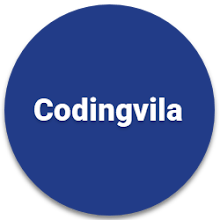In modern web development, JSON (JavaScript Object Notation) has become the standard format for transmitting data, particularly between a client and server. Understanding how to efficiently convert JSON data into a DataTable or DataSet is crucial for .NET developers working with API responses or file inputs. This article will walk you through converting JSON data into a DataTable or DataSet in a .NET Core application using C#, providing a clear step-by-step guide for implementation.
Key Concepts Covered:
- Convert JSON to DataTable in .NET Core
- Convert JSON to DataSet in .NET Core
- Deserialize JSON into .NET Core objects
- Bind data to GridView for display in a web application
Prerequisites:
- Visual Studio 2019 or higher
- Basic knowledge of JSON and .NET Core
- Newtonsoft.Json NuGet package
Requirements for the Implementation:
- Create a .NET Core Web Application.
- Read JSON data from a file.
- Convert JSON data to DataTable or DataSet.
- Bind DataTable to a grid for data display.
Step-by-Step Guide to Convert JSON to DataTable or DataSet in .NET Core
Step 1: Set Up the .NET Core Project
Open Visual Studio and follow these steps:
- Go to File > New > Project.
- Select ASP.NET Core Web Application, then choose Empty for the project template.
- Set the project path and click Create.
Step 2: Install the Newtonsoft.Json Package
You need to add a reference to the Newtonsoft.Json library to handle JSON data. Use the NuGet Package Manager to install it:
- Go to Tools > NuGet Package Manager > Package Manager Console.
- In the console, type the following command:
Install-Package Newtonsoft.Json
This will install the required library for JSON serialization and deserialization.
Step 3: Add a JSON File for Testing
Next, add a sample JSON file to the project:
- Right-click on the root folder and select Add > New Item.
- Choose Text File and name it JSONData.txt.
- Insert the following JSON data into the file:
{ "OrderTable": [ { "OrderNumber": "CO-00001", "CustomerName": "Nikunj Satasiya", "OrderDate": "05/10/2024", "ProductName": "Laptop-Dell", "Pcs": "1", "Amount": "35000", "CGST": "9% (3150.00)", "SGST": "9% (3150.00)", "NetAmount": "41300.00" } ] }
Step 4: Create the Razor Page or MVC View for Display
Now, add a new Razor Page or MVC view to the project to display the data:
- Right-click on the Pages folder, select Add > Razor Page.
- Name the page JsonToDataTable.
- In the newly created Razor Page, replace the content of the view with a simple form:
<form method="post"> <div> <h2>Order Details</h2> <table id="gridOrderDetails" class="table table-bordered"></table> <button type="submit" class="btn btn-primary">Convert JSON to DataTable</button> </div> </form>
Step 5: Write the Backend Logic to Deserialize JSON Data
In your JsonToDataTable.cshtml.cs file, you will handle reading and converting the JSON data.
- First, import the necessary namespaces:
using System.Data; using System.IO; using Newtonsoft.Json;
- Then, create a method to read and deserialize the JSON file into a DataSet:
public IActionResult OnPost() { // Read JSON data from the text file string jsonData = System.IO.File.ReadAllText("root/JSONData.txt"); // Convert JSON data to DataSet DataSet dataSet = JsonConvert.DeserializeObject<DataSet>(jsonData); // Bind DataTable to View (You can return this to a Grid in the View) if (dataSet.Tables.Count > 0) { ViewData["OrderTable"] = dataSet.Tables[0]; } return Page(); }
This code reads the JSON file and converts it to a DataSet. The first table of the DataSet is passed to the view using ViewData.
Step 6: Display the Data in a Table
Back in your Razor Page, bind the DataTable to a simple HTML table. Modify the view like this:
@if (ViewData["OrderTable"] != null) { <table class="table table-bordered"> <thead> <tr> <th>Order Number</th> <th>Customer Name</th> <th>Order Date</th> <th>Product Name</th> <th>Pcs</th> <th>Amount</th> <th>Net Amount</th> </tr> </thead> <tbody> @foreach (DataRow row in ((DataTable)ViewData["OrderTable"]).Rows) { <tr> <td>@row["OrderNumber"]</td> <td>@row["CustomerName"]</td> <td>@row["OrderDate"]</td> <td>@row["ProductName"]</td> <td>@row["Pcs"]</td> <td>@row["Amount"]</td> <td>@row["NetAmount"]</td> </tr> } </tbody> </table> }
This will render the OrderTable data into the HTML table when the user clicks the "Convert JSON to DataTable" button.
Step 7: Run the Application
Now, run your application and navigate to the Razor Page where you'll see the converted JSON data displayed in a tabular format.
Summary
In this article, we explored how to convert JSON data into a DataTable or DataSet in .NET Core using C#. We walked through a step-by-step example of reading a JSON file, deserializing the data, and displaying it using a simple table. JSON data is essential in modern applications, and understanding how to process it efficiently in .NET Core will significantly improve your backend data handling capabilities.
Tags:
- Convert JSON to DataTable .NET Core
- Convert JSON to DataSet in .NET Core
- Deserialize JSON in .NET Core
- JSON to DataTable conversion C#
- Bind JSON to DataTable in .NET Core


